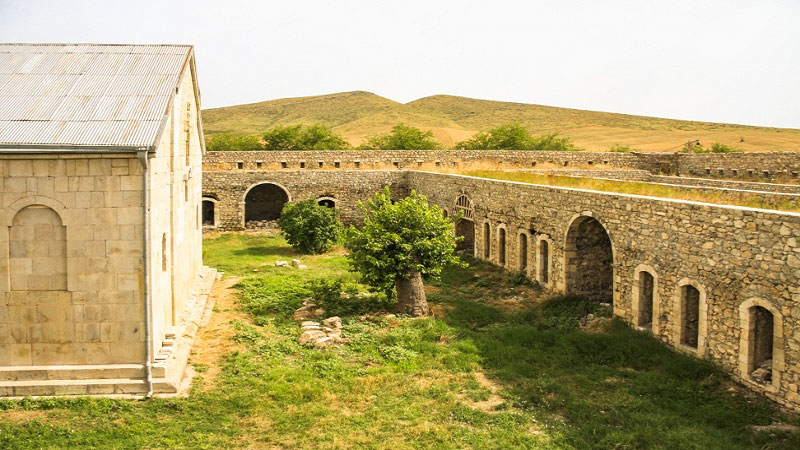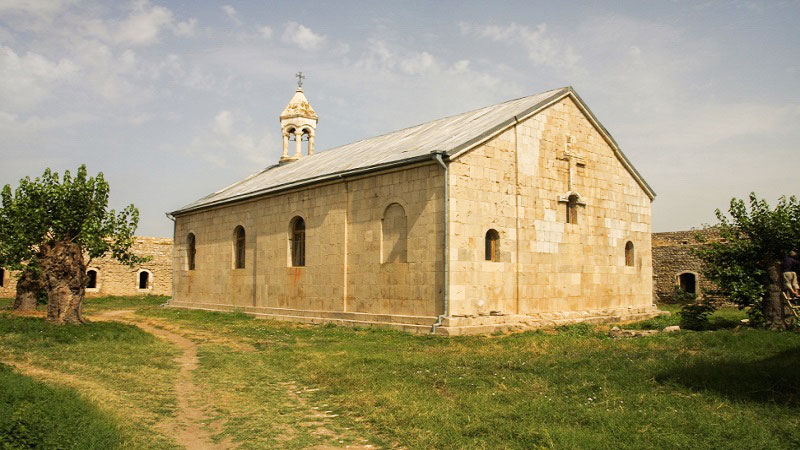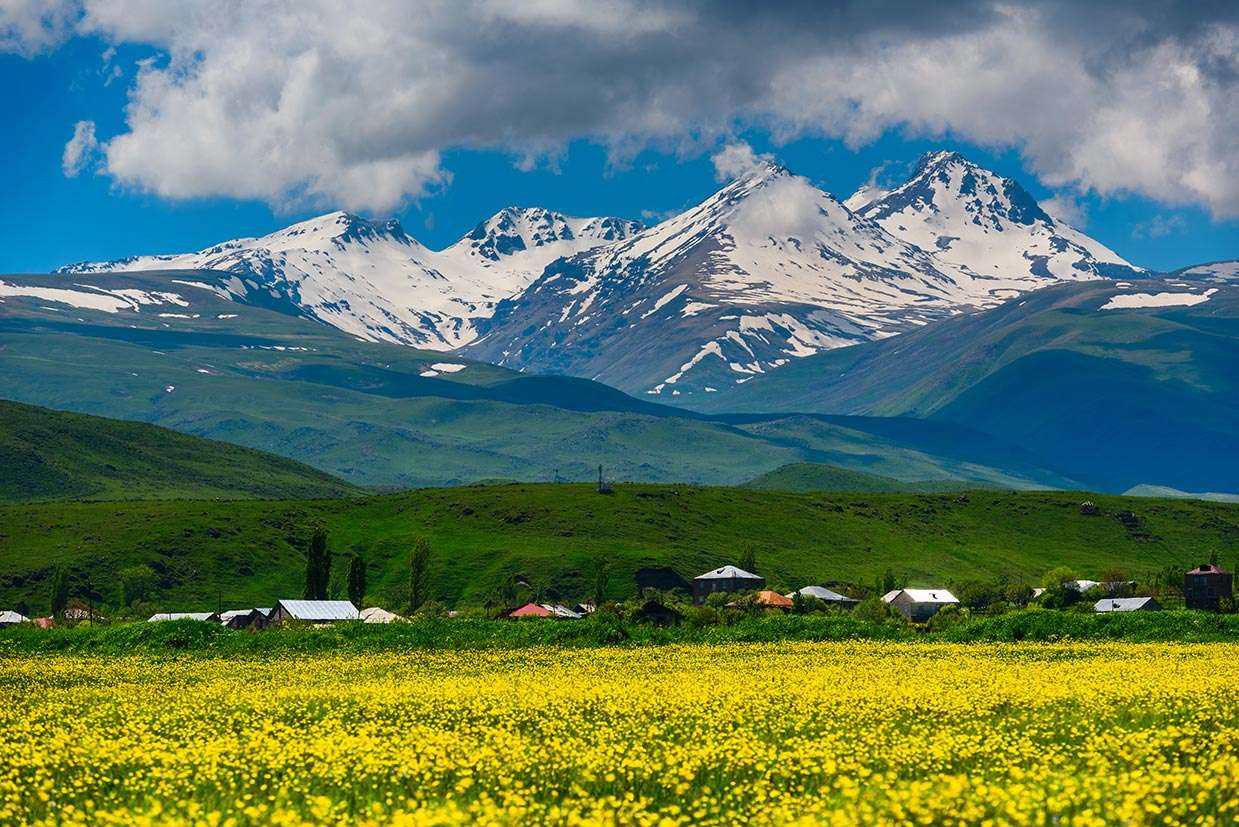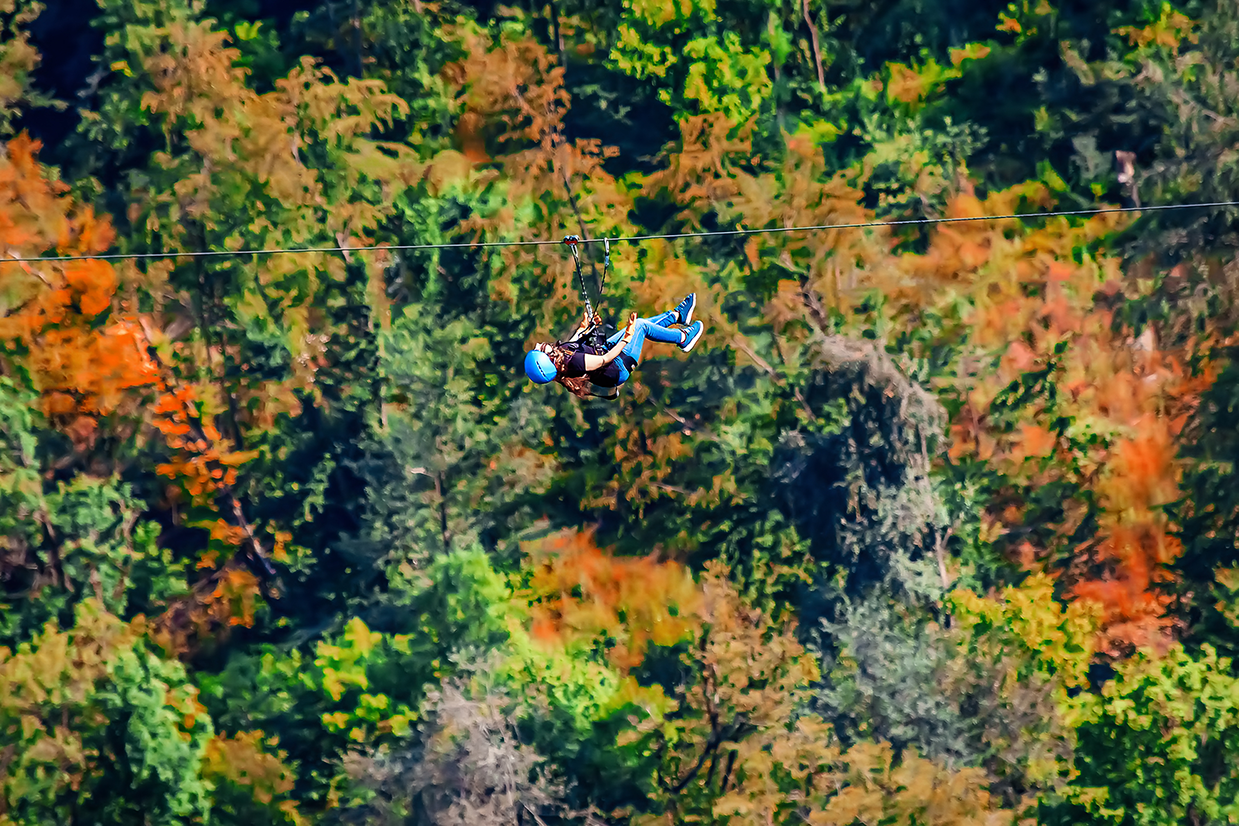Amaras Monastery
Amaras is an Armenian monastery in the Republic of Nagorno-Karabakh (Artsakh), in the Martuni region, which was founded in the 4th century by Gregory the Illuminator. Amaras is located in the middle of the Artsakh Valley. The monastery is located on the forested foot of the Mount Lusavorich. The name of the mountain is translated from Armenian as an illuminator in reference to Gregory the Illuminator, who meditated on its slopes before founding Amaras' main church. About 1700 years Amaras was an important ecclesiastical centre in Armenia. For a long time, it housed the seat of the Catholicos of Aghvank of the Armenian Apostolic Church. Some archaeologists claim that Amaras had a prehistory, and like some early Armenian churches and monasteries, it replaced a pagan temple.
The ruins of the early medieval city of Amaras, known as an ancient regional settlement, are situated near the monastery. The history of the Amaras Monastery reflects the heroic and tragic history of the Armenian peoplewho had to face invasion after invasion. Amaras' long history of destruction and restoration is also linked to the geographical location of the monastery. Unlike many of Armenia's historic churches, which were intentionally built in mountainous areas, Amaras was built in the middle of a large plain. In 1832, the Russian imperial authorities turned the monastery into a fortress and then into a customs house. And only in 1848, Baghdasar Hasan-Jalaliants, the head of the Gandzasar Holy See, was able to bring Amaras back into the arms of the Armenian Apostolic Church. But the many years of mismanagement and neglect have heavily impacted the condition of the monastery complex. In 1858, the church of St. Grigoris had to be completely rebuilt. Unfortunately, due to extensive renovation work, many features of the original building have been lost. The most important historical element of the monastery is the subterranean vaulted mausoleum which contains the tomb of St. Grigoris. This is the main shrine of the monastery, which is located under the altar of the church. A well preserved original building from the 4th century is adorned with carved geometric ornaments, typical of early Armenian churches. The current church of St. Grigoris was built of white sandstone taken from the nearby quarries at the foot of the mountain.The church is a three-nave basilica. The only entrance to the church is from the western side. It is illuminated by four large windows. The church of St. Grigoris has a double roof with a bell tower standing on six pillars. During its reconstruction in 1855, Amaras had three bell towers constructed side by side on the same roof. The largest and highest of the three was the one in the middle part of the roof, and the other two were symmetrically built on the west and east sides of the building. The west facade of the church is adorned with a large chiselled cross built under the gable and above the main entrance. A smaller cross adorns the opposite facade of the church. From the outside, the Amaras Monastery is a fortress with thick, five-meter-high stone walls. The only outer gate that leads inside the monastery is located in the south-eastern wall of the complex, which overlooks a small courtyard. The courtyard had its own gate with a corridor leading to the church. This intricate system of entrances was created for defence purposes and, along with thick walls and massive towers, should protect the monastery from invaders from the eastern steppes. This monastery is one of the most visited tourist destinations in Artsakh.







